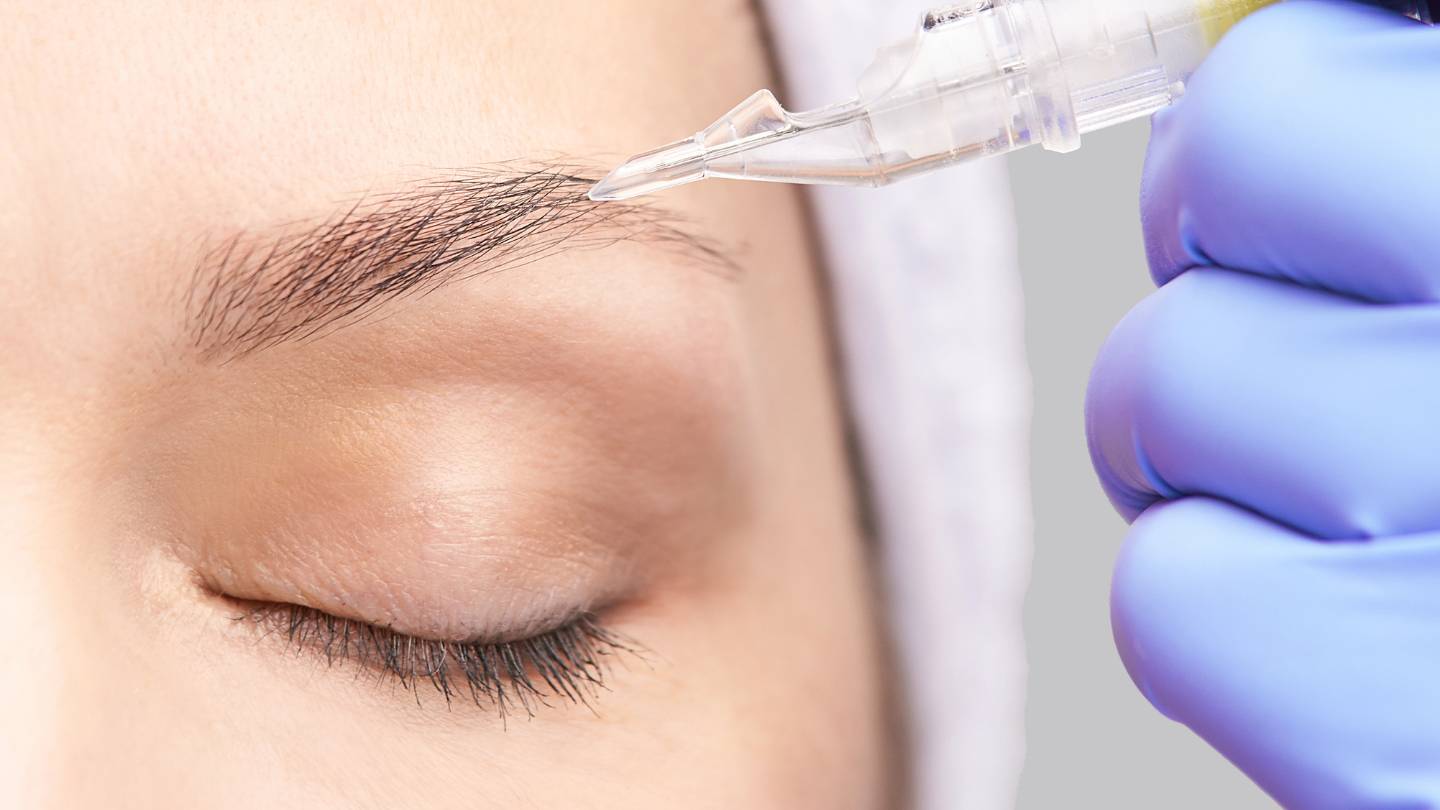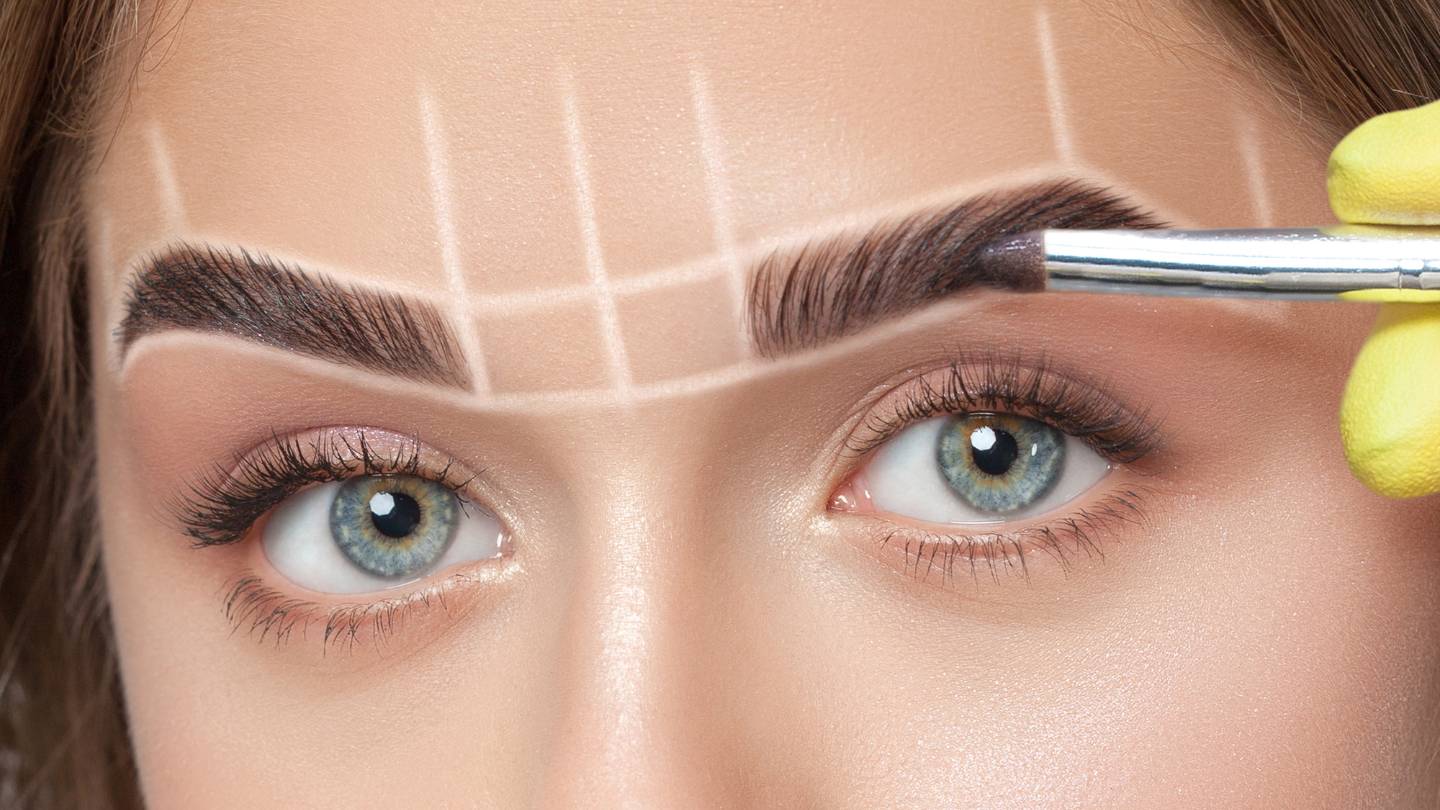Microblading is a popular cosmetic procedure that involves semi-permanent tattooing to enhance the appearance of eyebrows. However, as with any procedure that penetrates the skin, microblading comes with certain risks and side effects.
This article outlines the potential complications and side effects, helping you make an informed decision before undergoing the treatment.
Let’s get straight to the point
Microblading is a popular cosmetic procedure to enhance eyebrows, but it comes with potential risks and side effects. The main risks include infection from non-sterile equipment, allergic reactions to pigments, and scarring.
Other issues include pigment discolouration, uneven brows, and long-term skin damage. To minimise these risks, ensure your technician follows strict hygiene protocols, performs a patch test, and has experience.
Proper aftercare is essential for preventing complications. Before proceeding, consult with a dermatologist if you have a history of keloid formation or other skin conditions.
Infection Risk
One of the most significant risks associated with microblading is infection. Since the procedure involves making small incisions in the skin, there is the potential for bacteria or viruses to enter the wound and cause an infection.
If non-sterilised equipment is used during the procedure, or the technician fails to maintain proper hygiene standards, infections such as staphylococcus, HIV, or hepatitis could occur. Contaminated pigments may also introduce bacteria to the skin, leading to complications like pustules, redness, and swelling.
How To Minimise Infection Risk
- Ensure that the technician uses disposable tools or sterilised equipment for every client.
- Make sure the salon follows strict hygiene protocols, including the use of gloves and disinfectants.
- Follow the aftercare instructions provided by the technician to keep the area clean.
Allergic Reactions To Pigments
Although rare, some individuals may experience an allergic reaction to the pigments used in microblading. This reaction could occur immediately or develop over time as the skin reacts to the chemicals in the ink.
Pigments used in microblading may contain additives not regulated by the FDA, increasing the risk of allergic reactions. Symptoms may include itching, redness, and swelling around the eyebrows.
The risk is higher if the pigments contain metals such as nickel or mercury.
How To Minimise Allergy Risks
- Ask the technician for a patch test before the procedure to check if you’re allergic to any of the pigments.
- Choose a salon that uses high-quality, organic pigments, which are less likely to cause adverse reactions.
- Discuss any known allergies with your technician beforehand.
Scar Tissue Development
Another potential side effect is the formation of scar tissue on the eyebrows. This can happen when the technician applies too much pressure, cutting too deeply into the skin, or if the skin does not heal properly.
Keloid scars or hypertrophic scars are more likely to form in individuals who are genetically predisposed to scarring. Scar tissue can be thick, raised, and sometimes permanent, affecting the overall appearance of the eyebrows.
How To Minimise The Risk Of Scarring
- Choose a technician with experience and training to ensure they do not apply excessive force during the procedure.
- If you have a history of keloids or hypertrophic scarring, consult with a dermatologist before proceeding with microblading.
- Follow aftercare recommendations to ensure proper healing.
Discolouration Of Pigments
One common issue after microblading is the discolouration of the pigment over time. This can result in brows turning unexpected colours, such as orange, pink, or grey, as the pigments fade.
Pigments containing iron oxide or other metals may react with the skin and environmental factors, causing colour changes. Using low-quality inks increases the likelihood of this problem.
How To Prevent Pigment Discolouration
- Ensure that your technician uses high-quality, organic pigments, which are less likely to fade unevenly.
- Avoid excessive sun exposure and follow sun protection recommendations after the procedure, as UV rays can speed up pigment fading.
Uneven Brows Or Unsatisfactory Results
While microblading aims to create symmetrical and full-looking eyebrows, there’s always a chance of uneven results or a shape that does not meet your expectations.
Poorly executed microblading can result in uneven or unnatural eyebrow shapes, which can be difficult to correct. Some clients may not be happy with the final colour, especially if it doesn’t match their natural eyebrow or hair colour.
How To Avoid Unsatisfactory Results
- Look for a technician who provides a detailed consultation and designs the brow shape based on your preferences.
- Ask to see a portfolio of the technician’s previous work to ensure they have the necessary experience.
- Communicate clearly with the technician about your desired shape and colour before proceeding.
Skin Sensitivity And Redness
Following the procedure, it’s normal for the skin to feel sensitive and appear red for several days. However, in some cases, these symptoms can persist or worsen, leading to discomfort.
Mild redness and swelling should subside within a few days, but if symptoms persist, it may indicate an infection or allergic reaction. Overuse of certain ointments during the healing process can lead to clogged pores and irritated skin.
How To Alleviate Skin Sensitivity
- Use a gentle, fragrance-free cleanser on the treated area to avoid further irritation.
- Apply any recommended healing ointment sparingly, as instructed by your technician.
- Avoid using any harsh skincare products, including retinoids or chemical exfoliants, until the area is fully healed.
Emotional Distress From Poor Results
Sometimes, unsatisfactory results can lead to emotional distress. Clients who are unhappy with their microbladed eyebrows may feel disappointed or regretful, especially since the results can last for several years.
Emotional distress can stem from brows that don’t match your expectations or if the shape, thickness, or colour appears unnatural. Corrective procedures can be costly and time-consuming, adding to the frustration.
How To Minimise Emotional Distress
- Choose a technician who offers a comprehensive consultation before the procedure and provides realistic expectations.
- Make sure you’re comfortable with the brow design before proceeding.
- Keep in mind that microblading results fade over time, and touch-ups may be required to maintain the desired look.
Long-Term Skin Damage
Microblading involves inserting pigment into the skin’s surface, which can potentially cause long-term damage if done incorrectly. Over time, repeated treatments can affect the skin’s elasticity and structure.
- Repeated microblading can weaken the skin, making it more prone to scarring and discolouration.
- Poor aftercare can also contribute to long-term damage, including permanent pigmentation issues.
How To Avoid Long-Term Skin Damage
- Limit the number of touch-up sessions and avoid overloading the skin with pigment.
- Always follow the recommended aftercare procedures, and ensure the area is properly moisturised during the healing process.
The Risk Of MRI Complications
Although rare, some individuals with cosmetic tattoos, including microblading, may experience discomfort or complications during an MRI (Magnetic Resonance Imaging) scan.
- Some pigments used in microblading contain metallic compounds that can react with the MRI’s magnetic fields, causing swelling or discomfort in the tattooed area.
How To Manage MRI Complications
- Inform your doctor or technician about your microblading procedure before undergoing an MRI.
- If you experience any discomfort during the scan, alert the medical staff immediately.
Keloid Formation
For individuals who are prone to keloid scars, microblading poses an additional risk. Keloids are raised, thick scars that grow beyond the boundaries of the original wound.
- Keloid formation is rare in facial areas but may still occur, especially if the skin is predisposed to scarring.
- Microblading can trigger keloids in individuals who have a history of such scarring.
How To Prevent Keloid Formation
- Consult with a dermatologist if you are prone to keloids before undergoing microblading.
- Discuss alternative brow enhancement options if microblading is deemed too risky for your skin type.
Conclusion
While microblading offers a semi-permanent solution for enhancing eyebrow appearance, it is essential to be aware of the potential risks and side effects before undergoing the procedure. Infections, allergic reactions, scarring, pigment discolouration, and unsatisfactory results are some of the complications that may arise.
To minimise these risks, choose an experienced and qualified technician, follow proper aftercare instructions, and ensure that the salon adheres to strict hygiene standards. If you have any pre-existing skin conditions or a history of keloid formation, it’s essential to consult with a dermatologist before proceeding.
The key to successful microblading lies in proper preparation, realistic expectations, and following the right precautions to achieve beautiful and safe results.
FAQs About Microblading
Are There Any Risks Associated With Microblading?
Like any cosmetic procedure, microblading comes with potential risks and side effects. These can include infection, allergic reactions, and dissatisfaction with the results.
What Are The Common Side Effects After Microblading?
Common side effects include redness, swelling, and mild discomfort in the treated area. These usually subside within a few days.
How Long Does It Take To Heal After Microblading?
Healing times vary, but the initial healing process typically takes about two weeks. However, complete healing and fading of the pigment can take up to 4-6 weeks.
Can I Develop An Infection After Microblading?
Yes, there is a risk of infection if proper aftercare instructions are not followed. It’s crucial to keep the treated area clean and avoid exposure to bacteria.
Is There A Risk Of Allergic Reactions To The Pigments Used In Microblading?
Yes, some individuals may be allergic to the pigments used. Patch tests are recommended to identify potential allergies before the full procedure.


